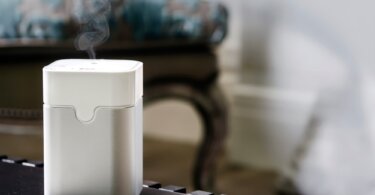
As garages are supposed to be well-sealed places, they are not very good at regulating temperature. If your garage feels wet and the floors are slippery, that’s your first warning of excessive humidity.
What follows is the bad smell and damaged garage construction. In the worst-case scenario, the condensation leads to mold and dust mites that cause allergies.
Luckily, there are many ways to tackle the humidity in your garage. So, let’s get to work.
Causes of Garage Moisture & Condensation Problems
You might have noticed dampness in your bathroom or basement, but even your garage can get very humid and create severe problems. Since garages are usually designed without any vents or outlets, they don’t promote proper air ventilation.
Read also: Optimal Basement Humidity Level for Each Season
When there’s no way for the wind to flow freely, the wetness in the air starts building up. It results in higher moisture levels inside the garage. When the moisture touches the garage’s cold floor, it turns into water droplets, which start condensation buildup.
No matter where you live, garage condensation can happen in both warm and chilly climates. The low winter temperature and excessive humidity in early summer can make your place vulnerable to moisture buildup.
Another very obvious cause of condensation is the melting snow or rain on your car. Excessive humidity and condensation cause sweating floors that are slippery and extremely annoying.
What’s worse, the heat accumulation inside the garage can seep into your house, making it warmer and giving rise to problems like wood rot and mold.
Recommend: Top 5 Air Purifiers for Removing Mold Spores
7 Effective Ways to Remove Humidity in a Garage
To control the humidity, you need to manage the conditions that are causing excess moisture.
Here’s a list of seven most practical ways to remove humidity from your garage:
- Control the temperature. The easiest method to control humidity is by controlling the temperature inside the closed space. You can do that by using a heater during the cooler seasons to heat the cold concrete floor. Apart from that, using a hygrometer can help you get the exact numbers so you know whether you have got things under control or not.
- Ensure proper ventilation. It’s another simple way to reduce humidity in your garage. You can start by opening the doors or windows to allow the trapped air to move out of the place for better airflow. If leaving the doors open is not an option, use exhaust fans or portable fans to blow out the excess moisture.
- Check the drainage. Inspect the ground around your house and the garage floor to ensure the drainage and gutters are not clogged. Also, check that the rain gutters are functional and fix any leaks in the roof, walls, or other cracks that might be drawing in water. Some detached garages don’t have gutters, which can be a problem. Although installing gutters and downspouts can cost a pretty penny, it can stop severe water-problems in your house.
- Dry your car before parking. If you park your car drenched in rain or snow, the moisture will evaporate inside the garage, leaving it wet and humid. So, dry it using a cloth before closing the garage.
- Organize the clutter. Everything scattered on the garage floor keeps the condensation inside by limiting the airflow. You can decrease the clutter by organizing everything on shelves and storage spaces. Also, remove any cardboard exposed wood to reduce the chances of mold buildup.
- Place some plants. Plants can absorb dew, humidity, and other forms of wetness. While a garage is not the best place to grow a plant, getting a few tough plants like cactus can be useful for space.
- Use a dehumidifier. If your garage’s humidity situation is getting out of hand, get a dehumidifier to directly deal with humidity, condensation, and mildew for good. A good humidifier can keep the moisture levels in check as long as it can handle the size of the garage. Also, make sure you empty the water bucket inside the unit to keep it in good condition.
Read our Dehumidifier vs Air Purifier Comparison
Best Dehumidifier Models for a Garage
Placing an efficient dehumidifier is the most excellent way to keep your garage free of humidity and mold. Just like it works inside the house, it can work in garages and basements too.
Here are our top two recommendations for garage dehumidifiers:
hOmeLabs 4,500 Sq. Ft.
The hOmeLabs 4,500 Sq. Ft Dehumidifier features a sleek design and efficiently eliminates humidity from garages and other areas as large as 4500 sq. ft. It can hold up to 1.8 gallons of water at a time.
The dehumidifier automatically shuts off after it reaches its maximum water holding capacity to prevent overflow. The model is relatively quiet, so you don’t have to listen to the constant buzzing of the unit.
Furthermore, you can set it on Turbo mode for higher efficiency and maximum dehumidification. One downside is that the unit does not turn off on its own after reaching the set humidity levels.
Vremi 1,500 Sq. Ft.
The Vremi 1,500 Sq. Ft. Dehumidifier has a fairly simple design and offers easy handling. It is ideal for spaces as large as 1,500 sq. ft. The dehumidifier removes up to 22 pints of water from the air per day, making it suitable for small garages.
The water tank can hold up to 1 gallon of water, and the unit automatically shuts off after reaching its maximum capacity. It also defrosts automatically to save you the hassle.
Although Vremi will serve you for years to come, it is relatively louder than other models. However, if a little noise in the garage wouldn’t bother you, it’s a good option.
You may also like: Why Does Your Dehumidifier Freeze-up & How to Fix
Summary
Humidity in your garage can take a turn for the worse if it is not addressed in time. It is also easier to stop decay or mold in its early stages.
The best way to remove humidity from your garage is to control the temperature inside and use a dehumidifier to keep it dry. You can also take additional steps like cleaning the clutter on the ground and placing plants in the area to reduce wetness.





